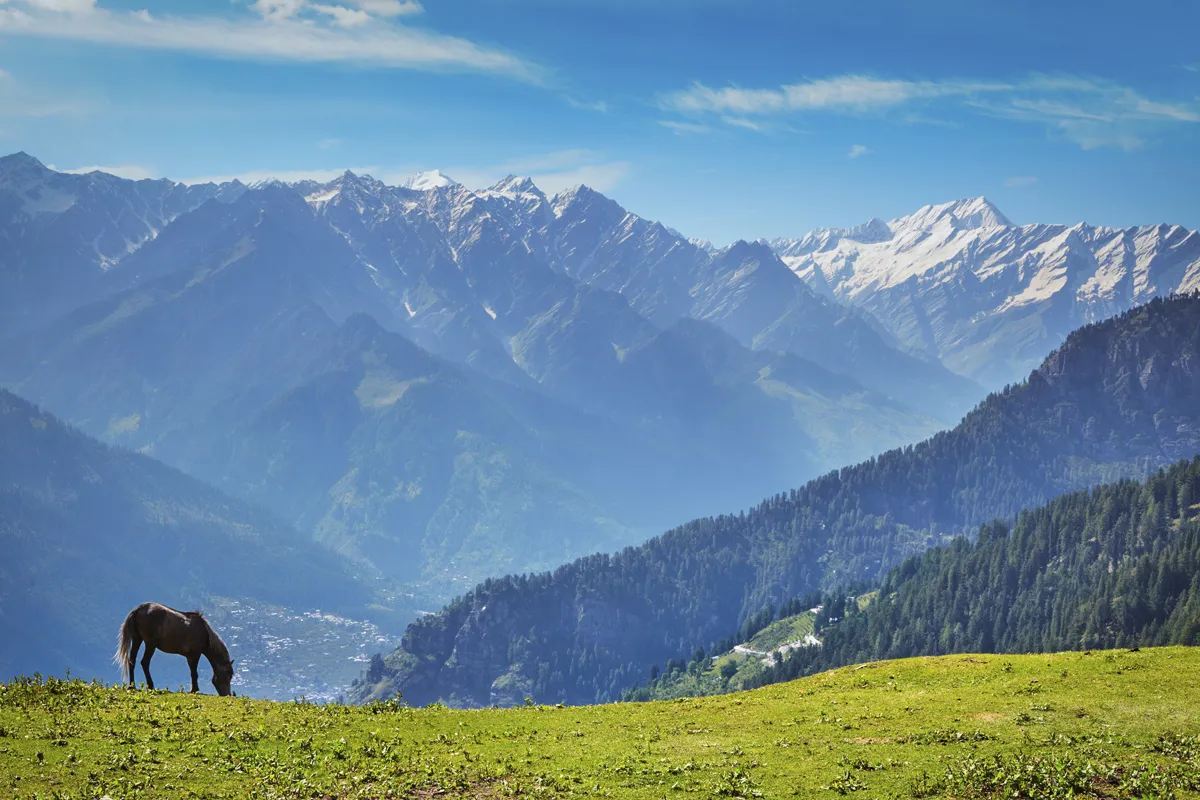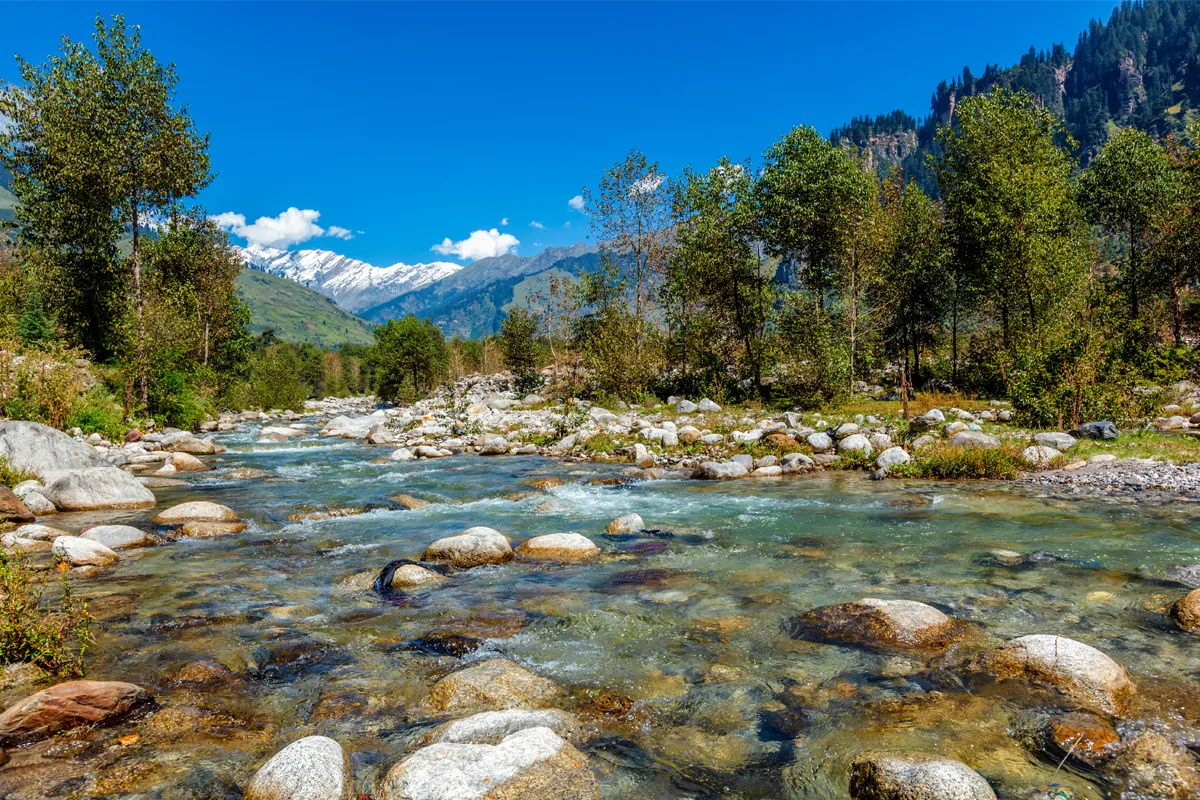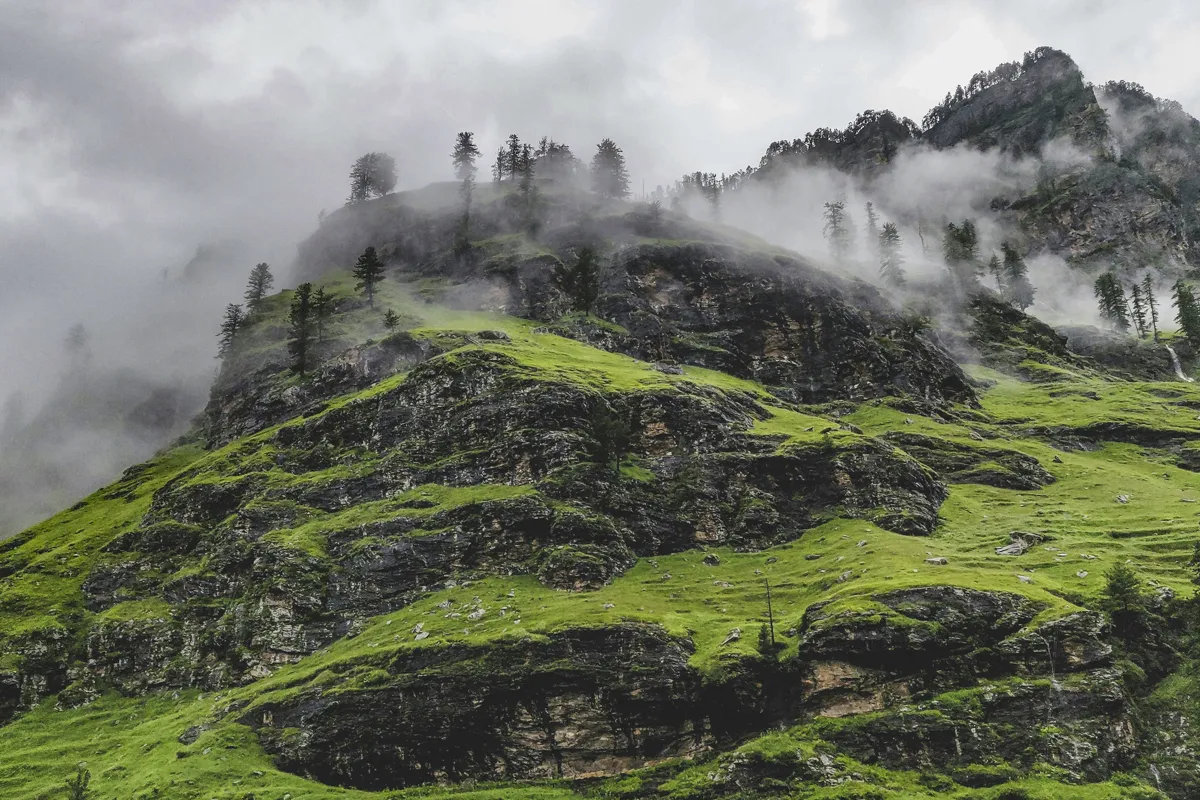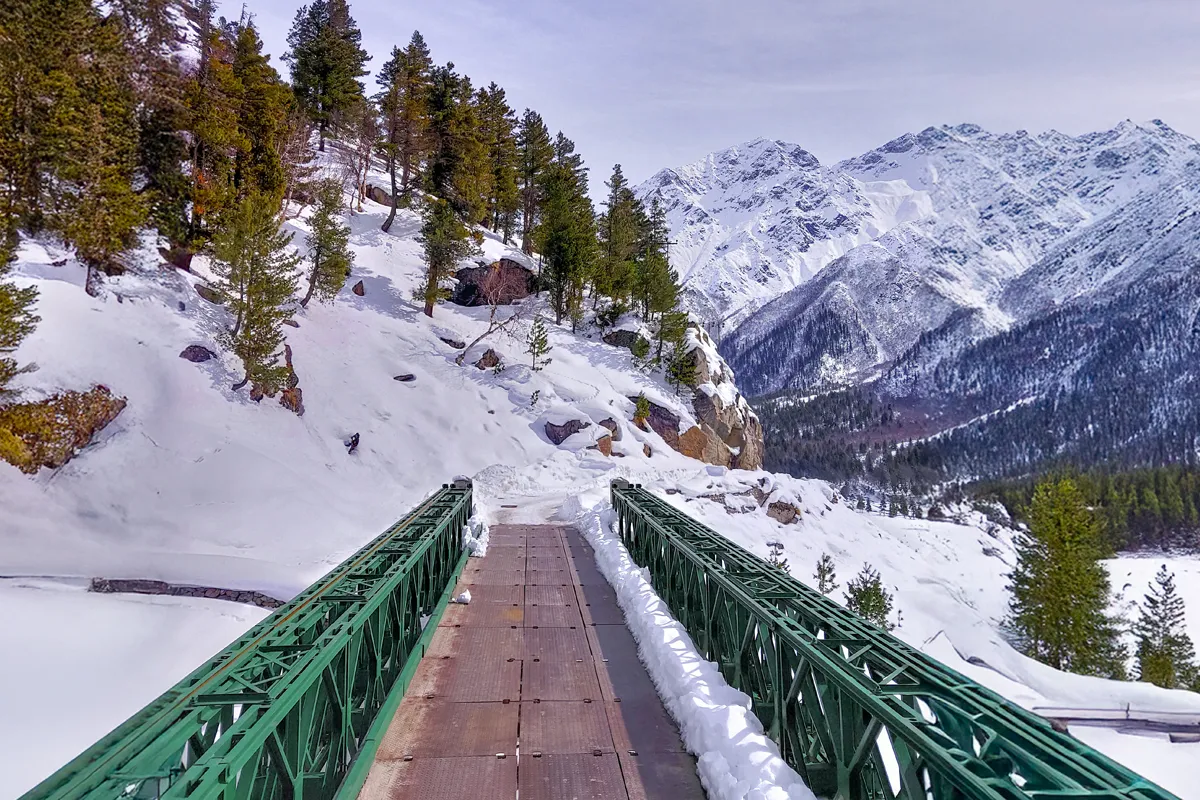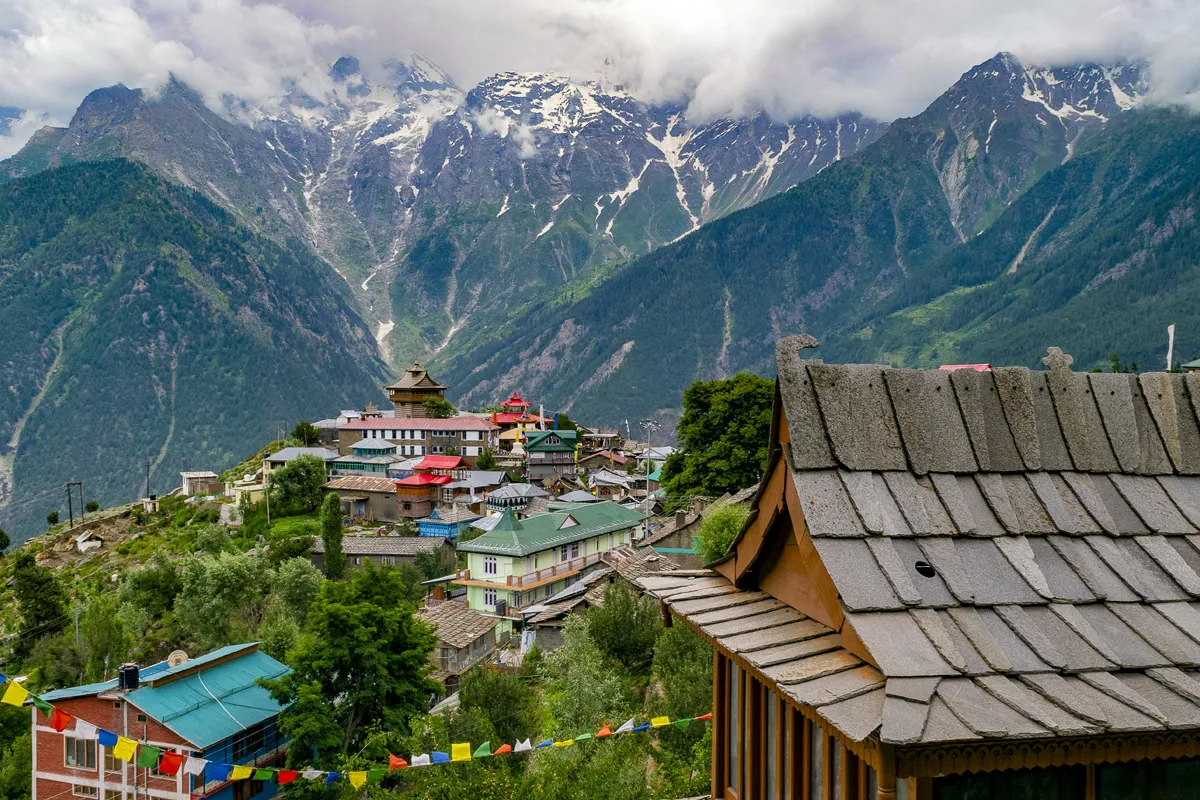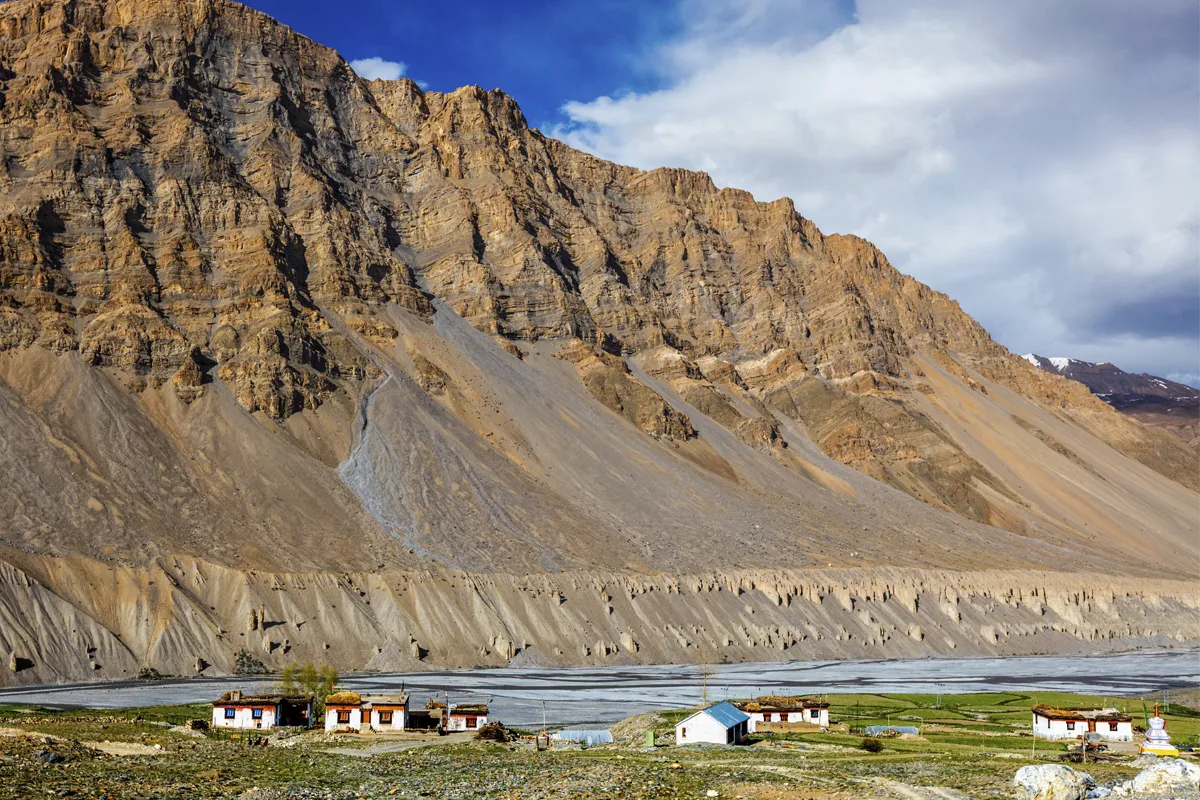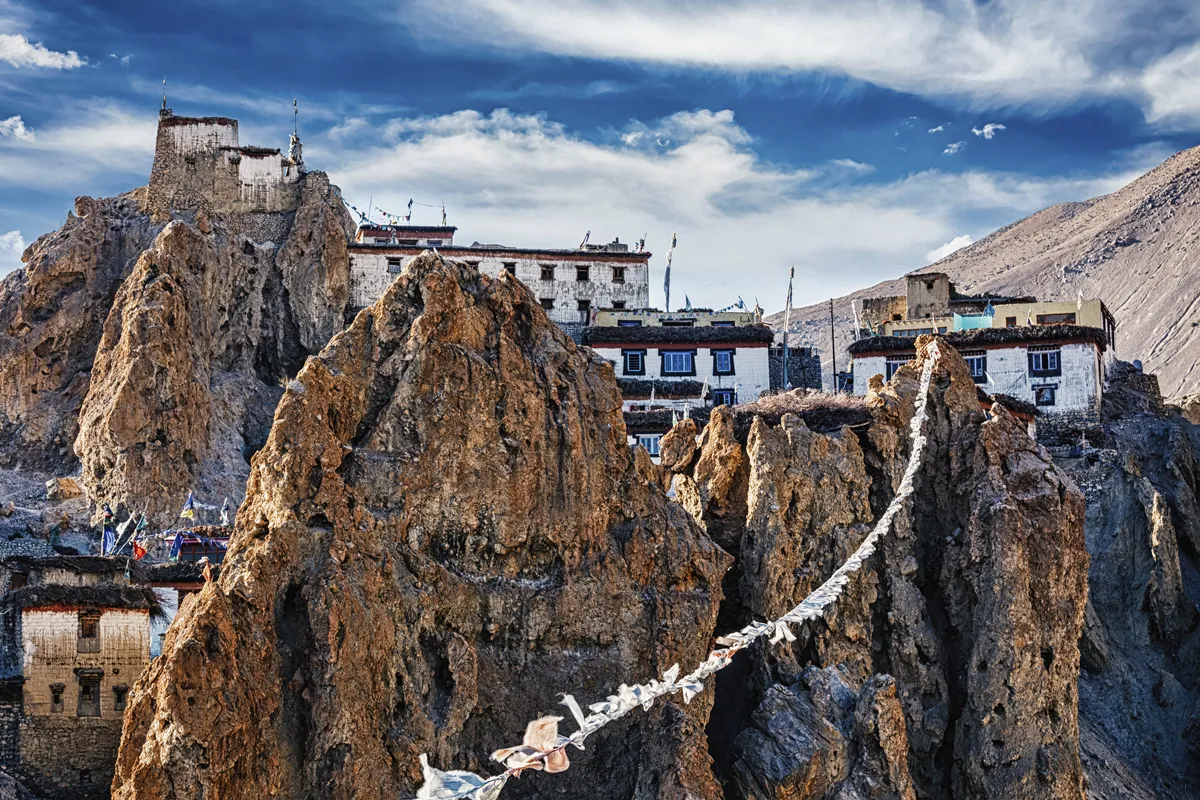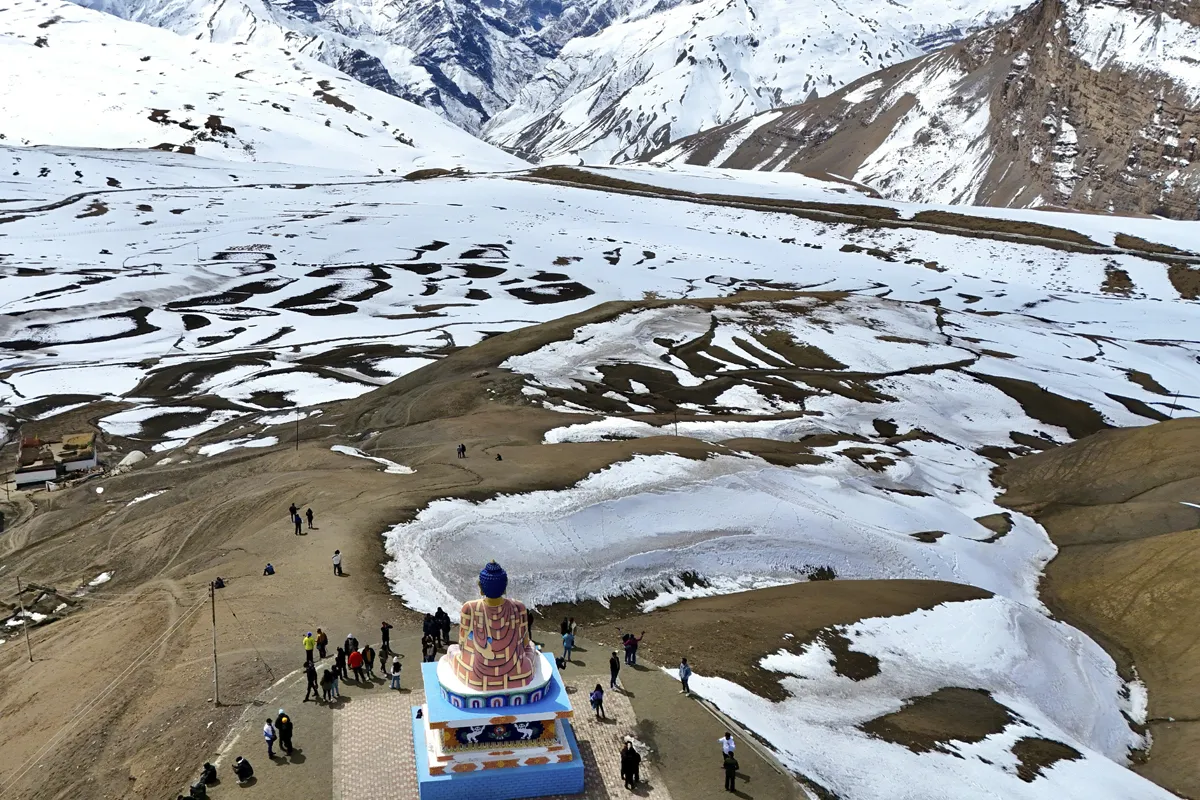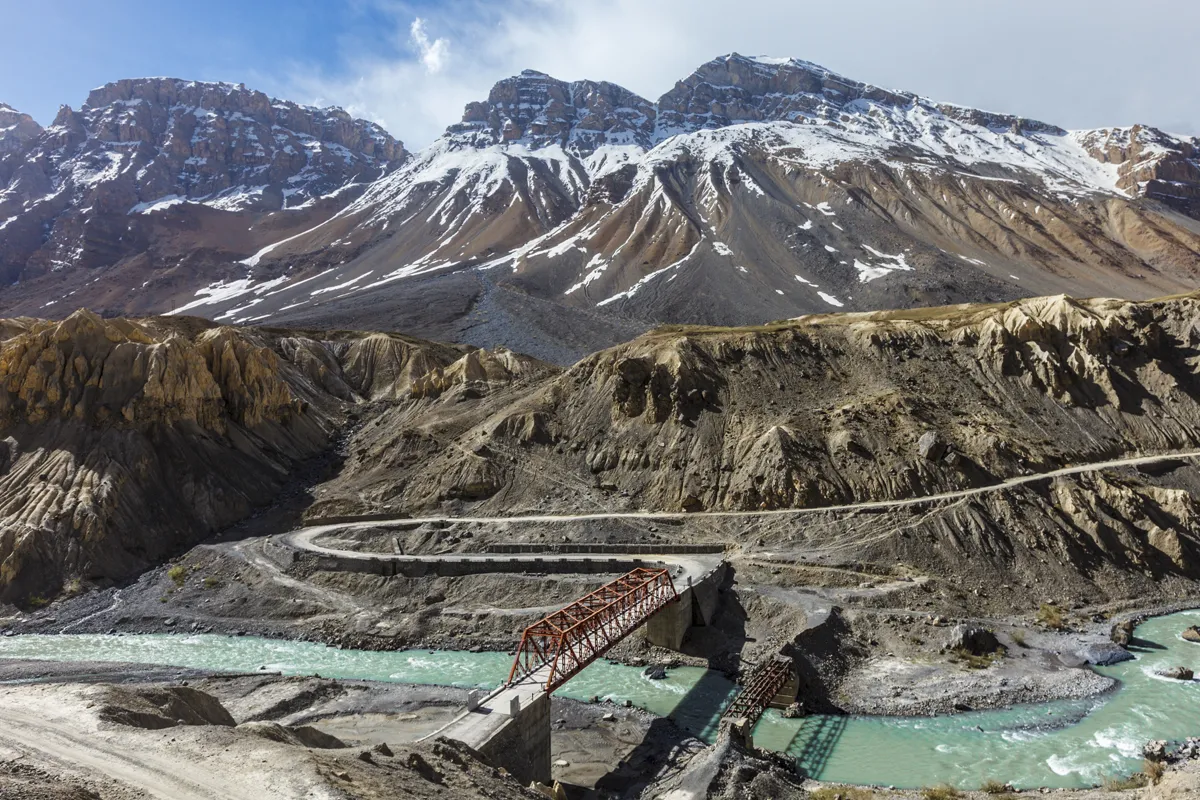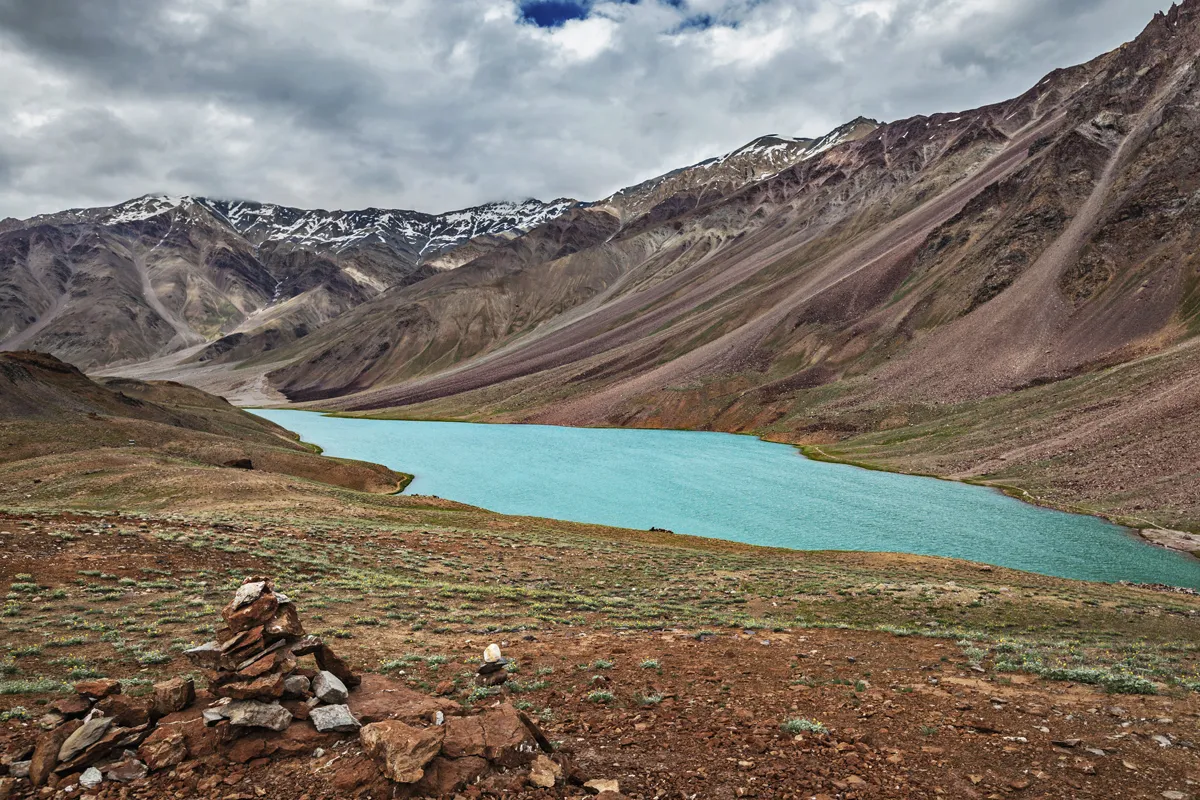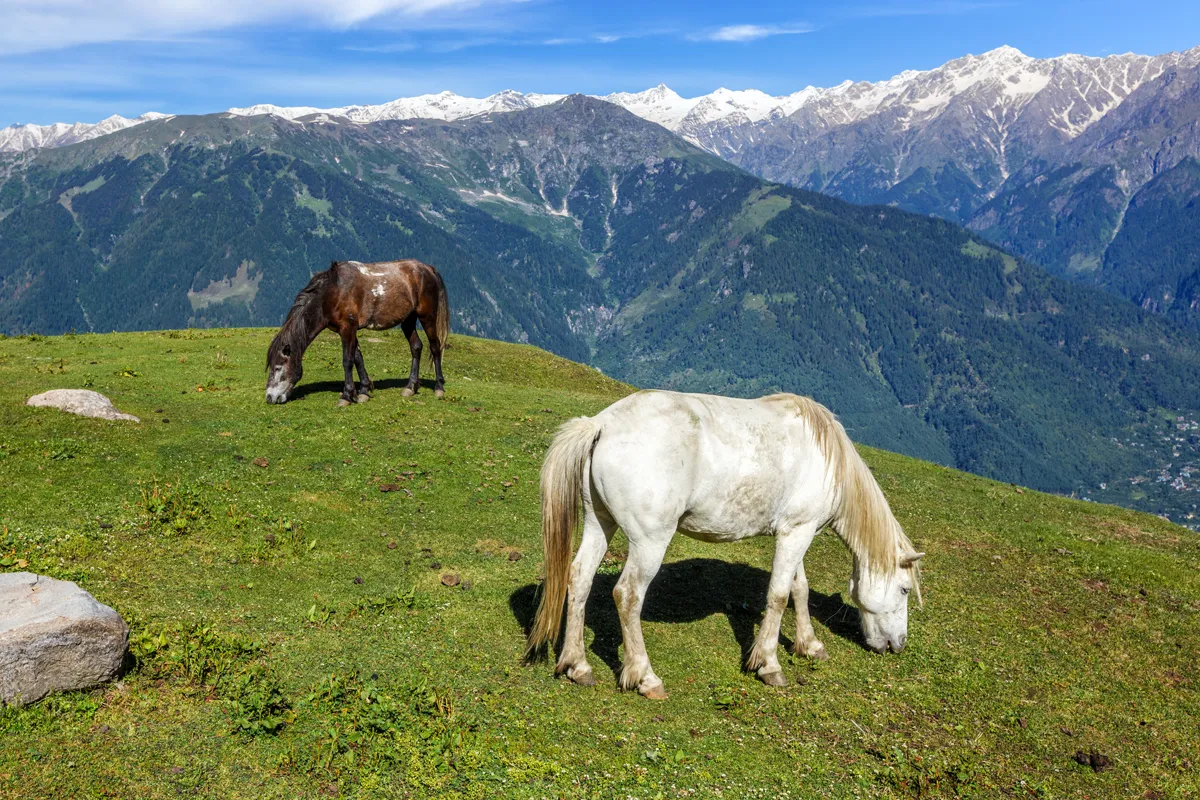Motorcycle Tour
Spiti Valley
Spiti valley is located in the north-eastern part of Himachal Pradesh, a state in the Himalayas of India. The name “Spiti” means “The middle land,” reflecting its location between mainland India and Tibet.
Spiti is isolated from the rest of India from November to May each year due to heavy snowfall, making the tour a unique blend of 30-70% paved and unpaved roads, with numerous stream crossings. This ride is the perfect adventure for motorcyclists seeking both challenge and beauty. The landscape transforms from lush green to barren mountains and back again, providing a harmonious and stunning backdrop. Immerse yourself in rich cultural experiences by visiting some of the world’s oldest Buddhist monasteries, and tackle three high-altitude passes. Explore the highest villages in the world that are populated year-round, and culminate the journey with a ride to the beautiful Chandratal lake, a high-altitude gem in the Himalayas.
A motorcycle ride to the remote Spiti valley is by no means easy, but using our experience we have crafted a route that lets you have a comfortable stay after each days gruelling ride and return home saying you had the ride of your life.
Tour Dates
Arrive in Manali
Plan to arrive in Manali by noon. Upon arrival, you will be checked into a hotel where you will meet the Ride of My Life team and your fellow riders. The road captain will brief everyone on the route and day-by-day plan. After the briefing, you will receive the keys to your Royal Enfield Himalayan motorcycle, giving you the freedom to make your own plans in the scenic town of Manali. If any adjustments to the motorcycle are needed, our skilled mechanic will be on hand to assist you.
Explore Manali
In the morning, we set out on the Manali-Leh highway, the world’s highest road. We head north from Manali towards the newly-constructed Atal Tunnel, the longest tunnel above 10,000 feet in the world, stretching 9 km. Exiting the tunnel, marvel at the changing landscape in the Chandra valley, which becomes increasingly rugged as the mountains grow taller. Ride along the mighty Chenab river in the valley and arrive at Tandi, where the Chandra and Bagha rivers converge to form the Chenab. Tandi is the last fuel stop for the next two days, as the roads ahead are closed during the winter months. We follow the Bagha river to Jispa, a charming village surrounded by magnificent mountains, and spend the night at a hotel.
Manali to Shoja
Today, experience the transformation from lush green landscapes to the barren moonscape that Ladakh is famous for. Enjoy a picturesque ride past small lakes, waterfalls, and streams. Tackle your first high-altitude pass, Baralach La, reaching 16,500 feet, and ride down to Sarchu, a high-altitude plateau surrounded by dramatic landscape. We spend the night at Sarchu, where comfortable Swiss tents with attached toilets will be your accommodation.
Chitkul to Kalpa
Plan to arrive in Manali by noon. Upon arrival, you will be checked into a hotel where you will meet the Ride of My Life team and your fellow riders. The road captain will brief everyone on the route and day-by-day plan. After the briefing, you will receive the keys to your Royal Enfield Himalayan motorcycle, giving you the freedom to make your own plans in the scenic town of Manali. If any adjustments to the motorcycle are needed, our skilled mechanic will be on hand to assist you.
Kalpa to Tabo
In the morning, we set out on the Manali-Leh highway, the world’s highest road. We head north from Manali towards the newly-constructed Atal Tunnel, the longest tunnel above 10,000 feet in the world, stretching 9 km. Exiting the tunnel, marvel at the changing landscape in the Chandra valley, which becomes increasingly rugged as the mountains grow taller. Ride along the mighty Chenab river in the valley and arrive at Tandi, where the Chandra and Bagha rivers converge to form the Chenab. Tandi is the last fuel stop for the next two days, as the roads ahead are closed during the winter months. We follow the Bagha river to Jispa, a charming village surrounded by magnificent mountains, and spend the night at a hotel.
Tabo to Kaza
Plan to arrive in Manali by noon. Upon arrival, you will be checked into a hotel where you will meet the Ride of My Life team and your fellow riders. The road captain will brief everyone on the route and day-by-day plan. After the briefing, you will receive the keys to your Royal Enfield Himalayan motorcycle, giving you the freedom to make your own plans in the scenic town of Manali. If any adjustments to the motorcycle are needed, our skilled mechanic will be on hand to assist you.
Kaza
In the morning, we set out on the Manali-Leh highway, the world’s highest road. We head north from Manali towards the newly-constructed Atal Tunnel, the longest tunnel above 10,000 feet in the world, stretching 9 km. Exiting the tunnel, marvel at the changing landscape in the Chandra valley, which becomes increasingly rugged as the mountains grow taller. Ride along the mighty Chenab river in the valley and arrive at Tandi, where the Chandra and Bagha rivers converge to form the Chenab. Tandi is the last fuel stop for the next two days, as the roads ahead are closed during the winter months. We follow the Bagha river to Jispa, a charming village surrounded by magnificent mountains, and spend the night at a hotel.
Kaza to Chandratal
In the morning, we set out on the Manali-Leh highway, the world’s highest road. We head north from Manali towards the newly-constructed Atal Tunnel, the longest tunnel above 10,000 feet in the world, stretching 9 km. Exiting the tunnel, marvel at the changing landscape in the Chandra valley, which becomes increasingly rugged as the mountains grow taller. Ride along the mighty Chenab river in the valley and arrive at Tandi, where the Chandra and Bagha rivers converge to form the Chenab. Tandi is the last fuel stop for the next two days, as the roads ahead are closed during the winter months. We follow the Bagha river to Jispa, a charming village surrounded by magnificent mountains, and spend the night at a hotel.
Chandratal to Manali
Plan to arrive in Manali by noon. Upon arrival, you will be checked into a hotel where you will meet the Ride of My Life team and your fellow riders. The road captain will brief everyone on the route and day-by-day plan. After the briefing, you will receive the keys to your Royal Enfield Himalayan motorcycle, giving you the freedom to make your own plans in the scenic town of Manali. If any adjustments to the motorcycle are needed, our skilled mechanic will be on hand to assist you.
Departure from Manali
In the morning, we set out on the Manali-Leh highway, the world’s highest road. We head north from Manali towards the newly-constructed Atal Tunnel, the longest tunnel above 10,000 feet in the world, stretching 9 km. Exiting the tunnel, marvel at the changing landscape in the Chandra valley, which becomes increasingly rugged as the mountains grow taller. Ride along the mighty Chenab river in the valley and arrive at Tandi, where the Chandra and Bagha rivers converge to form the Chenab. Tandi is the last fuel stop for the next two days, as the roads ahead are closed during the winter months. We follow the Bagha river to Jispa, a charming village surrounded by magnificent mountains, and spend the night at a hotel.
Literally meaning “The Middle Land”, Spiti is so called because it is surrounded by mountain ranges on all sides. Located in the Trans-Himalayan region of main range of Himalayas, it also lies between the former empires of Bushair, Kullu, Ladakh and Tibet.
People
Spiti is predominantly a Buddhist region populated with people of Tibetan stock. The valley is one of the least populated regions of the country, with an average population density of 2.3 people per square kilometre. The Gompas (Buddhist Monasteries) in Spiti are a sight to behold just by virtue of their location. Their position in the society is unique and are major guiding forces of people’s daily life. The Ki and Tabo monasteries, which we visit on our ride are among the oldest monasteries in the world.
Terrain
Spiti is a land of contrasts. With negligible annual rainfall but with heavy snowfall, patches of green fields amidst barren landscapes, it is a feast for the hungry eyes of a traveller. Apart from mountains and valleys, Spiti has a unique storehouse of shale and an unmatched geological collection of fossils. Some of the rock faces tell stories about the geological history of the Himalayas. In some valleys, the effects of tectonic thrust, which created Himalayas, can be seen and studied.
Weather
Spiti experiences severe winter from November to May with Arctic like wind conditions and heavy snowfall. The treacherous weather permits visitors to tour only between the months of June to October, when the roads and villages are free of snow and the high passes (Rohtang La and Kunzum La) are open. Rest of the year, Spiti remains cut-off from the mainland by road. During the tour, we can expect temperatures to range between 29 degrees celsius at the highest and a low of 2 degrees celsius in the nights, though it will typically be around 10 degrees celsius. Note that on the high-altitude passes, the temperatures can drop below zero degrees celsius depending on the weather.
Flora and Fauna
The valley is blessed with a good population of Snow Leopard, Ibex, Himalayan Brown Bear, Musk Deer, Himalayan Blue Sheep and more. There are two important protected areas in the region that are home to the Snow Leopard and its prey – the Pin Valley National Park and the Kibber Wildlife Sanctuary. Due to ardent religious beliefs, people of Spiti do not hunt these wild animals. Apart from the exotic wildlife, the Spiti is also known for its amazing wealth of flora and the profusion of wild flowers. There are more than 62 species of medicinal plants found in Spiti.
For more information on Spiti, visit the Wikipedia page.
Frequently Asked Questions
Here is a list of frequently asked questions. If your question is not in this list, just contact us.
